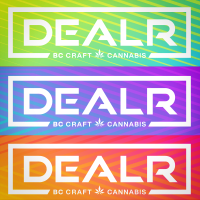
With the global cannabidiol (CBD) market reaching a size value of over $3.5 billion this year, it’s no surprise that the CBD space is more saturated than ever before. Farm co-ops, celebrity entrepreneurs and savvy investors alike are all looking to get in on the action, in turn flooding the market with new products every year.
These days, the sheer scale of product selection can seem daunting to new CBD consumers. But thanks to new industry regulations implemented across North American markets, there is a reliable way to separate quality products from ones with oblique or outright misleading labels; namely, the use of certificates of analysis.
What are Certificates of Analysis, and why are they important?
Certificates of Analysis (COAs) are essentially proof of a product’s passing laboratory analysis verifying its contents. This speaks to product potency, purity, net volume per bottle and other particulars.
The certification process involves testing a batch of products rather than a single one, in order to ascertain a working average against company claims printed on product packaging. This form of quality assurance helps consumers who may feel overwhelmed browsing store shelves filled with similar products.
While CBD product testing and certificates of analysis are an excellent barometer for product quality among discerning veteran shoppers, many CBD greenhorns are still unsure as to how to make full use of COAs. This post goes over everything from the introduction of COAs into the CBD industry to how all consumers can get the most information out of them, both online and offline.
The Role of Government Regulations on Product Labeling & Packaging
In Canada, CBD is regulated similarly to THC under the Cannabis Act. Like the American FDA, the Minister of Health established strict labeling guidelines in response to what was a growing trend of CBD companies labeling their products with inaccurate or misleading information. This ranged from spurious health claims to embellished product potency specifications, all designed to justify premium pricing on subpar products.
The Cannabis Act’s comprehensive set of regulations include rules on labeling specifically. Today, no health claims whatsoever are allowed on product packages, and key information such as net volume of contents, a complete ingredients listing and potency specifications must be printed legibly on the front panel.
While the mislabeling activities of shady CBD companies have ground to a halt, COAs are still needed to certify that all values printed on product packaging are accurate, as found via laboratory testing carried out by qualified professionals.
How to Find COAs in CBD Products
COAs can typically be found on the CBD product package itself on either the rear or side panels, or on a leaflet within the package. COAs will state the name and address of the laboratory or facility in charge of product testing, as well as common contact information like email, phone number or social media.
Alternatively a QR code is supplied which, when scanned via a smartphone, leads to a dedicated webpage with more comprehensive information. These can include testing dates, terms of certification and details on the laboratory’s testing procedures. Further COA information might also be found on the CBD product manufacturer’s website.
An example of a low quality or even spurious COA is one printed in simple text or lettering with no QR, contact, or website information whatsoever.
What to Look For in COAs
While COAs are certainly a welcome sight on product packaging, a simple statement of certification isn’t enough when shopping for quality products. Here are three important items every COA should include, in no particular order:
- Third-party testing indicates that the testing process was carried out by a laboratory or facility independent from the CBD product manufacturer, with no financial motivation to produce positive or favorable results. Some COAs are issued by entities partnered with the manufacturer, further casting doubt on the true purity, potency or composition of the product.
- Free from adulterants such as heavy metals, chemical residue, microbial contaminants or trace amounts of extraction solvents. This is particularly important for CBD concentrates and oils designed for use in vaporizer-type products such as pen, cartridge, pod or tank vapes, given the CBD product will interact with a heating element and is likely to produce new, potentially harmful byproducts into the body.
- Pesticide and/or herbicide information will indicate whether or not the CBD product is sourced from organically-grown plants and, if not, whether or not leftover pesticides or herbicides used throughout the crops’ growth cycle were detected in testing.
Lastly, it’s also worth noting a COA’s limits of detection (LOD) or limits of quantification (LOQ) parameters. These are scores based on the established lowest amount or concentration or amount that can be determined in an analyte. In CBD oil’s case, that would be a minimum milligrams per milliliter (mg/mL) in order to be detected in testing.
In short, LOD or LOQ scores basically indicate the sensitivity — and in turn the accuracy — of the testing process used in certification, making them an important item consumers should look for in any COA when shopping for quality products.












